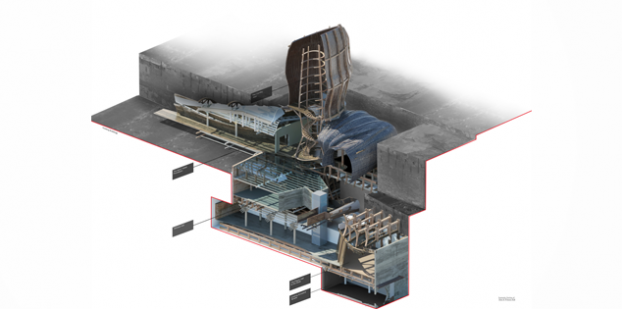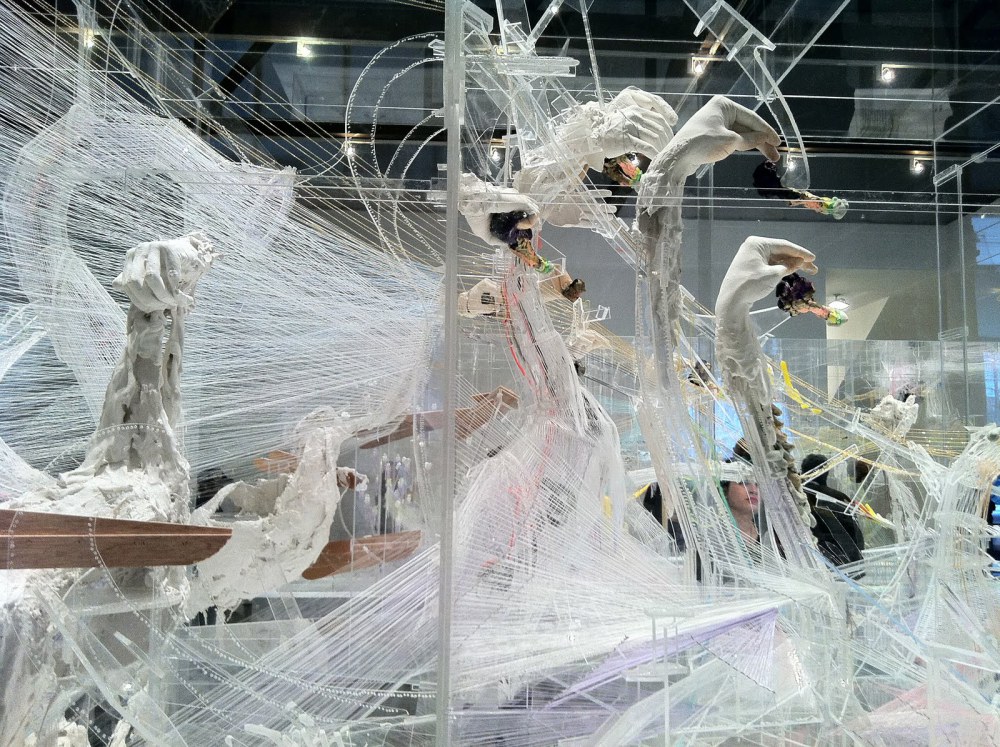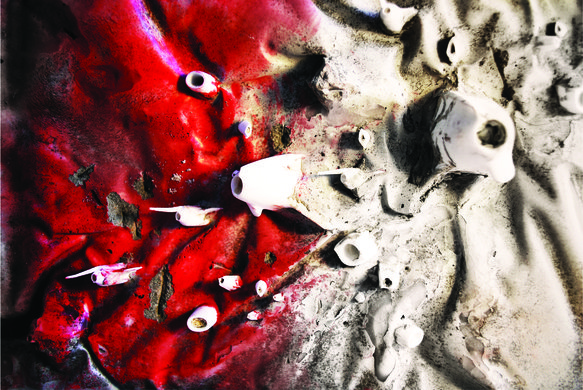Think Tank
News

Brief 2013-14: Carving a Giant
19 September on Brief“Instead of railing against the possibility of body analogies in architecture let me suggest that what we used to call bodies have simply mutated and transformed into something else. The bodies themselves are probably the same as they always were but our concepts have changed…” — Greg Lynn
Unit 18, or Generational Phantoms, will continue to study architecture as a social space informed by cultural narratives and responding to the challenges of the informational age.
Last year we investigated the concept of encryption into material and studied the symbolically overloaded and religiously diverse city of Jerusalem to generate architectures of layered effects and social participation. This year we will focus on the human body as principle measure for design and mediator between immersive technology and social environments to develop architectures of collaboration.
Encoded into architecture via ornaments, symbols, proportions and hierarchical arrangement principles the human body has been a constant if not the most predominant factor to generate a harmonious architecture but also to express the human character, occupational importance, political power or general wealth. Encrypted in delicate Ionic columns, divided into the Golden Section, ruled in the Vitruvian Man, re-enacted in Le Corbusier’s Modulor, embedded in the environmental cybernetic network of Cedric Price and genetically designed into post-human monstrosities the body role in architectural language and composition has experienced several resurrections.
In this context we will explore the relevance of the human body as a natural measure in today’s fluid and networked cities. To what extent is the encoding of the body metaphor and subsequently cultural/subcultural identities important to the role of architecture in communities today? How can (and why should) architecture ‘talk’ and communicate with us utilising ornamental, narrative and interactive technology techniques? The unit will constantly work between digital/physical prototypes and intuitive design as a way to translate social interactions between building and body. We will investigate sensorial and immersive architectures and design spaces for radical social interactions and unexpected collaborations between different users and social groups.
01: Carving a Giant – Measure of Change

Top left – Leonardo Da Vinci, “Vitruvian Man” (c. 1490), Top right – Le Corbusier, “Modulor Man” (1945), Bottom – Jean-Jacques Leqeu, “Geometry of the Face” (1792)
The concept of the body as a figurative measurement and natural proportion has been used and applied to architecture for centuries. However in recent history of architecture this dominant idea was disputed by many architects in relation to time and change (material, user, environmental), information overload and digital age.
We will start the year with an investigation of the validity and presence of classic concepts such as design principles related to human proportions, anthropomorphism and ‘body without organs’ in today’s architecture discussion.
Which characteristics of the human body other than size could be translated into the built environment? How could, for example, expression be measured and this information be used to design an architecture that establishes an emotional, sensual or intellectual connection with its user? Furthermore we will question the importance and role of ornament and space and construct alternative definitions of ornamentation. Students will develop their own version of how ornaments can contain or embed information about the body as production unit and reception/communication element. Taking as departure point the crisis of the body as a static figure, students will design an ornamental prototype that reacts to time reflecting change in some sort.
Students will work back and forth between digital and physical methods. The output of this first exercise will be different scale physical models and carefully taken photographs displaying process, material choices, translation strategy, communication concept and making techniques.
02: Unit trip – corporate bodies, sacred bodies, and body cultures in India
India will be our research ground to extend our investigations from the individual body to a collaborative/collective body. Based on previous interests on the how the body is embedded into material we will visit high-contrast places and experience a rich culture that offers radical perspectives and traditions around the body and its relation to space, cosmos and architecture. We will study India’s architectural history based on a deep relationship with sacred traditions of the body, including how temples were build by guilds referencing sacred texts like the Manasara Sanskrit.
In search for alternative views on how bodies operate collectively we will visit artists’ workshops, IT companies and sites of manufacture. India is one of the biggest exporters of manufactured goods but also capital of outsourcing companies, mainly IT and call centres, in the world where digital collaborative networks exist alongside traditional craftsmen.
03: Carving a Giant – Body’s in Collaboration: the Crafted Working Space
For the main project students will expand their initial ideas of one body to bodies in the plural and explore concepts of collaboration and craftsmanship as existing in the notion of guilds. Guilds have historically been linked to groups of merchants and artisans that self-organised, controlled standards of production and managed apprenticeship. As progenitors for secret trade unions and corporations, guilds survived due to their relation to craftsmanship. Today the guild concept has evolved into the business world of consultants and corporations (from ‘corpus’ = body).
Fourth year students will focus on developing a conceptual work frame taking into consideration material symbolism and building programme in an adequate scale in line with the Design Realisation strategy.
Fifth year students will develop a thesis following their research on body encryption and architecture language based on digital and analogue tests. The final project will be a mature speculative and critical architecture based on students’ interest and aspirations.



